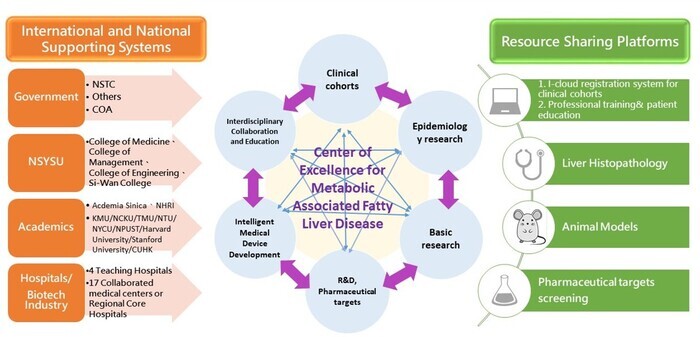Introduction of CEMAFLD

🔶Evolution
Non-Alcoholic Fatty Liver Disease (NAFLD) or named as Metabolic associated fatty liver disease (MAFLD), is the most common chronic liver disease globally, with a prevalence rate of 25%. With the advance in the disease control of HBV and HCV by mass HBV vaccination and antivirals, MAFLD has become the major cause of end-stage liver disease, hepatocellular carcinoma (HCC), and liver transplantation in Europe and USA, which will lead to global health threat with significant economic impact. However, there remain many huge unmet needs in the control of MAFLD, including the pathogenetic mechanisms, prevention, treatment and therapeutic targets.
🔶Purpose of Establishment
To resolve the threats of MAFLD, we establish “The Center of Excellence for Metabolic Associated Fatty Liver Disease(CEMAFLD)” to conduct a comprehensive investigation on MAFLD, including epidemiology, pathogenesis, diagnosis, management, as well as the development of therapeutic agents and medical devices.
We expect to accomplish international and nationwide epidemiological investigation, establish platforms for clinical cohorts, pathological reading, animal models and education, complete pre-clinical trials of potential pharmaceutical targets, publish MAFLD position statement and consensus guidelines, and conduct professional training programs and public health education. We expect the achievement could be served as reference of policy-making for public health. CEMAFLD also responds to cultivating outstanding scientific research talents, providing opportunities for international exchange visits and academic cooperation, and conducting industry-university cooperative development with industries. The CEMAFLD will become the first and leading global MAFLD Center in Asia-Pacific, and continuously reach Sustainable Development Goals.
🔶Core Projests
1.Clinical Outcomes and Prognostic Impact of MAFLD/MASLD on Liver Disease and Cancer
2.Investigation of the Pathogenic Mechanisms, Potential Therapeutic Targets, and Biomarkers of MAFLD/MASLD
3.Exploration of the Risk and Mechanistic Links Between MAFLD/MASLD and Cardiovascular Diseases
4.Effects of Exercise Prescription on MAFLD/MASLD
5.Clinical and Epidemiological Features of Lean MAFLD/MASLD

 r of Excellence for Metabolic Associated Fatty Liver
r of Excellence for Metabolic Associated Fatty Liver